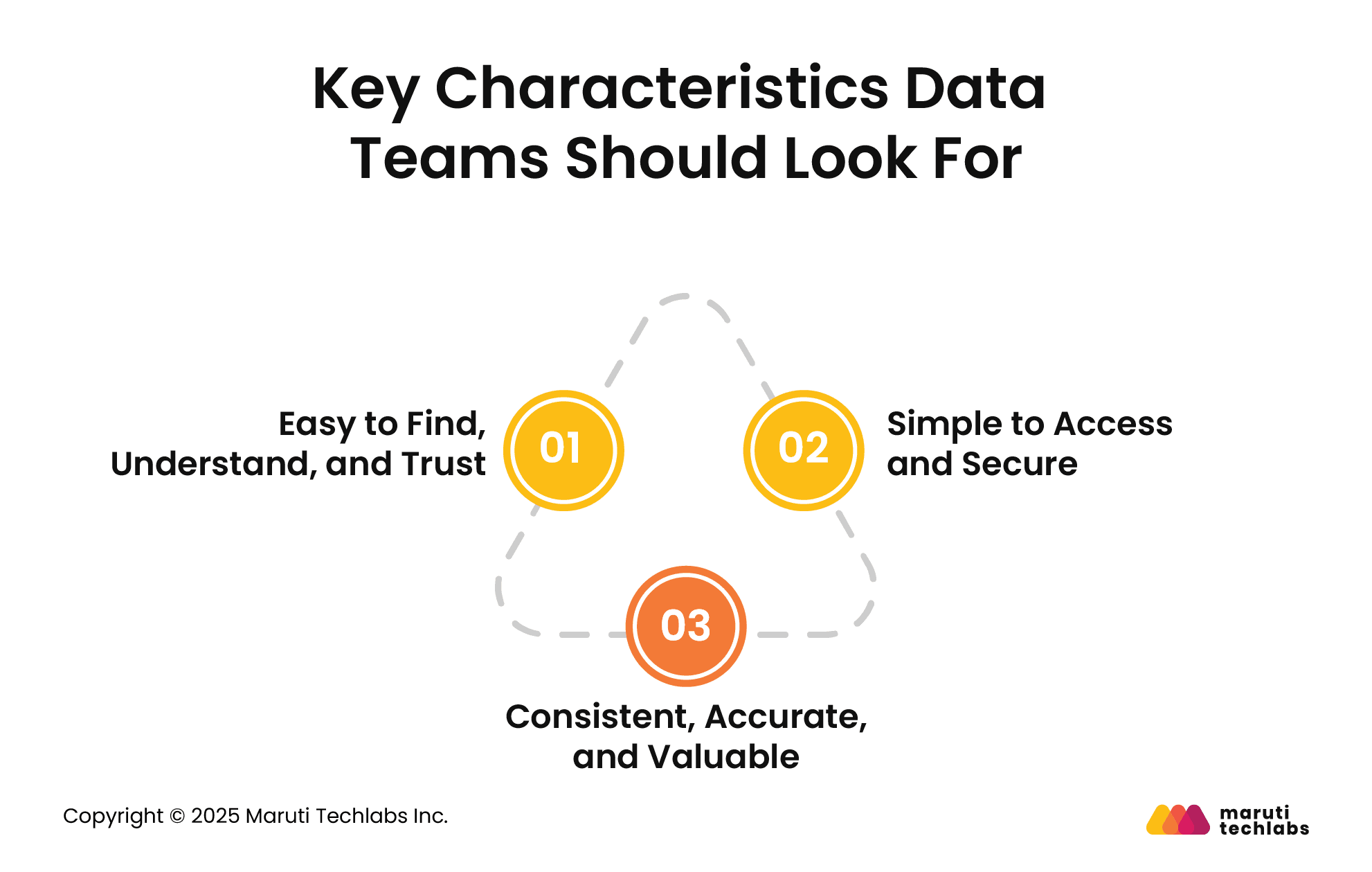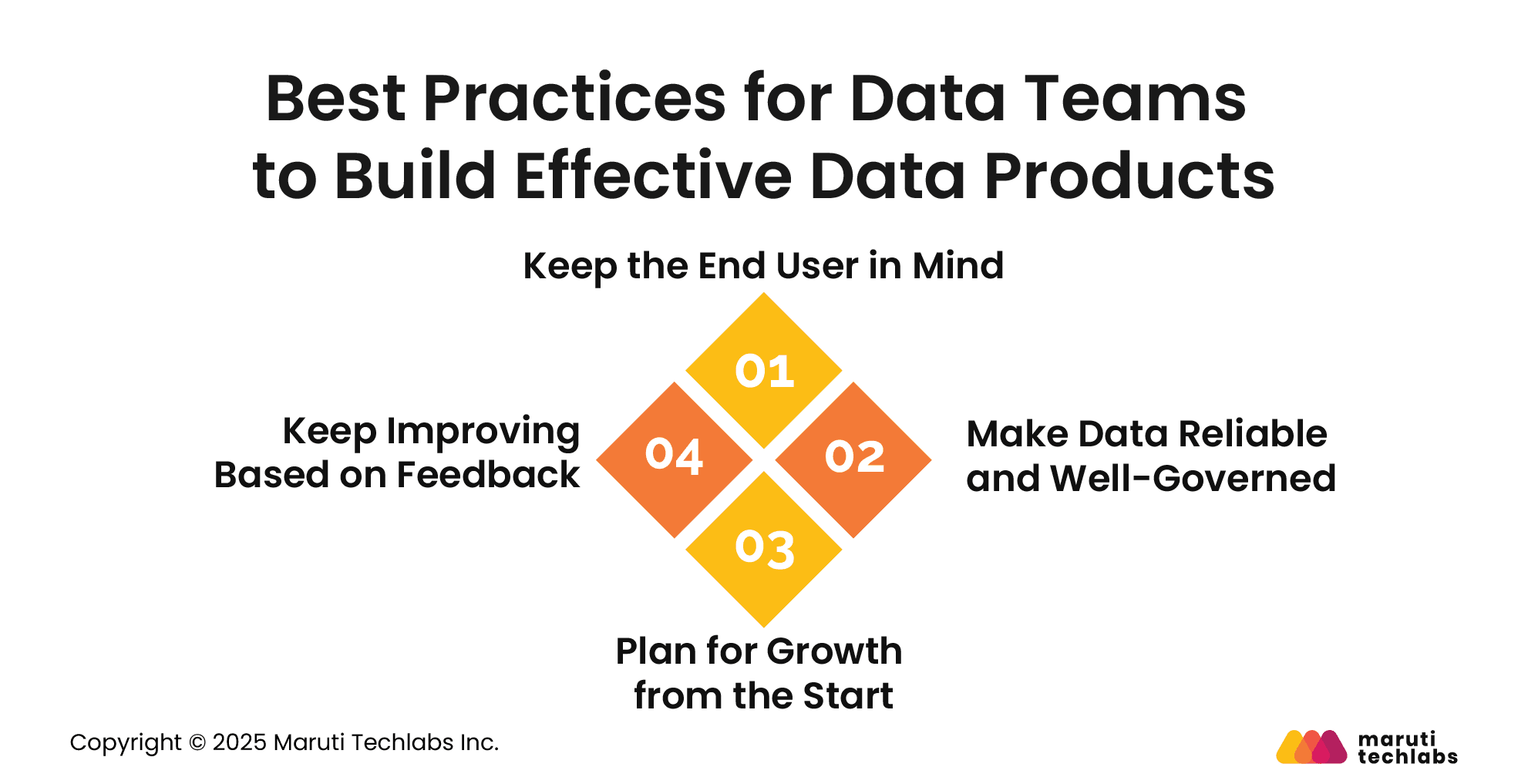

A Practical Guide to Creating Scalable and Valuable Data Products






Many companies are turning to data products to get more value from their data. According to Gartner, 50% have already deployed them, and another 29% are exploring the idea. It’s easy to see why. Businesses today are flooded with data. Every click, sale, and customer interaction creates information. Applications themselves are constantly generating data, from error logs to performance reports. But having data isn’t the same as using it.
For many enterprises, raw data sits in silos or spreadsheets, hard to understand and even harder to act on. Traditional processes like ETL and waterfall-style workflows often slow things down, creating confusion between teams and breaking the insights flow. A small change in one system can ripple downstream, altering key metrics and causing missed opportunities.
That’s where a good data product can make a real difference. Instead of scattered files and unclear dashboards, a strong data product organizes and simplifies data. It turns raw information into useful insights that are easy to access, understand, and act on, whether it’s spotting a trend, tracking KPIs, or predicting future outcomes.
In this blog, we’ll explore what makes a good data product, how to build one, and the common challenges data teams face.
A data product is an innovative tool that uses data to solve real problems. Much like a map app uses traffic, location, and user reviews to guide you, a data product pulls together different data sources and turns them into something useful. In business, this could mean showing sales trends, predicting demand, or spotting issues early without digging through spreadsheets or reports. The goal is to make data simple, clear, and actionable for those who use it.
The idea of  data products started gaining attention in the early 2010s, especially as companies like Google and Amazon built tools powered by user data. At the same time, data teams began shifting from just creating dashboards to building reliable, user-friendly tools that deliver real value.
data products started gaining attention in the early 2010s, especially as companies like Google and Amazon built tools powered by user data. At the same time, data teams began shifting from just creating dashboards to building reliable, user-friendly tools that deliver real value.
Traits of a good data product include:
When these traits come together, data becomes more than just information; it becomes a powerful tool for action.
To build data products that serve their purpose, data teams must go beyond collecting and organizing data. Certain core qualities help ensure these products are reliable, helpful, and easy to work with. Here are the key characteristics to look for:

A good data product should be easy for teams to discover and make sense of. Clear documentation about what the data means, how it's structured, and how often it's updated is key. When changes happen, like a shift in data format or frequency, downstream users should be informed quickly. This keeps everyone on the same page and builds trust in the product. Backward compatibility, even if limited, also helps avoid sudden breakages.
Teams should be able to access the data product without jumping through hoops, but that doesn’t mean security is ignored. It’s about offering the right level of access to the right people. That could be through APIs, database tables, or files with well-defined and documented permissions. Moving from a “protect-by-hiding” approach to a “securely share” mindset helps teams get what they need faster and safer.
Data products should speak the same language. That means using consistent naming and data types, like always calling customer ID fields “CustomerID” and keeping them as integers. This kind of standardization makes it easier to combine and compare data across teams. Just as important, the data should be accurate and useful.
Every reused data product should add something new, not just repeat the same insights. A well-built data product delivers value by supporting better decisions or enabling new ones.
Building data products that truly serve the business requires more than technical skill. Many organizations fall into avoidable traps that reduce the value, adoption, and scalability of their data efforts. Below are some common mistakes along with practical ways to avoid them.

Many teams confuse building data outputs (like dashboards or datasets) with treating data as a product. The latter involves applying product thinking, which is focused on user needs, lifecycle management, ownership, and long-term usability. Without this mindset, data products often become disconnected, hard to maintain, and serve narrow use cases.
How to avoid it:
Design data products with broad usability in mind. Apply product management principles, define ownership, and plan for governance and scalability from day one.
Technical execution is only part of the process. True success requires a mindset shift across leadership, data teams, and business users. Without cultural alignment, data product initiatives may stay siloed or lose momentum.
How to avoid it:
Secure leadership support to drive visibility and funding. Educate teams through training and clear communication. Show how data products impact roles, goals, and decision-making.
A well-designed data product is useless if users can’t find it. When discovery is overlooked, teams spend extra time searching for data or accidentally duplicate efforts, leading to confusion and inefficiency.
How to avoid it:
Introduce a discovery layer, like a data catalog, that includes metadata, ownership, and context. Make it part of regular workflows so users can easily search, understand, and trust the data they access.
Retrofitting legacy reports or datasets into data products rarely works well. These assets often lack documentation, clear ownership, or scalability, making them hard to maintain or extend.
How to avoid it:
Start fresh by identifying high-value use cases and building purpose-fit data products. Over time, replace outdated assets and ensure every product is well-documented, owned, and aligned with current business needs.
Without clear metrics, it’s hard to justify ongoing investment in data products. Worse, without usage data or feedback, it becomes nearly impossible to improve them effectively.
How to avoid it:
Define success using measurable KPIs like adoption rate, usage, and user satisfaction. Regularly collect feedback and share internal wins to highlight the value delivered and guide future improvements.
Creating data products that users actually value involves more than writing code or building dashboards. It’s about taking a user-first approach, ensuring data quality, planning for growth, and keeping things relevant over time. Here are four key practices to help data teams build products that work and last.

A data product is only helpful if people can use it. Let’s say a marketing analyst needs to compare ad campaigns. If the data is buried in complex tables or hard-to-read visuals, they may miss key insights. But if the product offers a clear, easy-to-navigate dashboard, they can quickly spot what’s working and make smarter decisions.
To get this right, involve users early in the process. Ask what they need, test prototypes with them, and keep checking in. Products built with real user feedback are far more likely to succeed.
If your data isn’t accurate, nothing else matters. Think about a healthcare tool that combines patient data. If records are outdated or inconsistent, doctors might make wrong calls based on faulty insights.
That’s why strong data governance is essential. This includes setting rules for data entry, ensuring consistency across systems, and protecting sensitive information. When the data is clean and trustworthy, the decisions made from it are too.
Performance becomes critical during times of increased usage. For example, during a flash sale, an e-commerce platform may experience a sudden spike in traffic. If the data system is not designed to handle such a load, it may slow down or fail, resulting in lost sales and reduced customer trust.
To avoid such issues, it’s important to design systems with scalability in mind. Cloud-based solutions can adapt to increasing demand and ensure consistent performance. A data product that remains reliable under pressure builds user confidence and supports long-term adoption.
The best data products aren’t static; they evolve. Over time, business goals shift and user needs change. A tool that was useful last year might not be relevant today.
That’s why it’s crucial to monitor usage and gather feedback regularly. Look at what users request or struggle with, then use that input to make smart updates. This helps the product stay useful and used.
Data products are becoming a core part of how modern companies use data to make faster, better decisions. They help users find the right data quickly, trust what they see, and act on it, without needing deep technical knowledge. Whether used for day-to-day operations or big-picture analytics, strong data products reduce the time it takes to turn raw data into clear insights.
To succeed, data teams should focus on building reliable, scalable, and user-friendly data products that are easy to find and reuse. The future of data products lies in having structured processes and tools that manage the entire lifecycle, from planning and design to delivery and continuous improvement.
At Maruti Techlabs, we help businesses do exactly that. With our Data Engineering and Data Visualization services, we build tailored data products that are aligned with your goals. Whether starting from scratch or upgrading existing systems, we support you in designing solutions that fit your users’ needs and your technical setup.
Choosing the right approach today prepares your organization for a more efficient, data-driven tomorrow. Contact us to explore how we can help you build data products that drive real business value.
Data products are tools built using data to solve real-world problems or answer specific questions. They take raw data, process it, and present insights in an easy-to-understand format like dashboards, reports, or machine learning models. Instead of just showing raw numbers, data products help people make better decisions quickly. They're designed to be user-friendly, repeatable, and valuable for business and technical users.
Regular data tools are often built for specialists; they help collect, store, or query data. A data product, on the other hand, is built with end-users in mind. It combines data, technology, and design to solve a specific problem. While tools might only display data, a data product adds value by offering ready-to-use insights that are reliable, scalable, and aligned with business goals.
Data products are used across many industries, such as healthcare, finance, retail, manufacturing, logistics, etc. In healthcare, they help doctors analyze patient history. In retail, they show which products are selling well. Financial firms use them to assess risk. Any industry that uses data to make decisions can benefit from data products, especially those looking to improve speed, accuracy, and efficiency in their operations.
Data products turn complex data into simple, actionable insights, saving time and reducing guesswork. Teams may waste hours digging through reports or waiting for technical help without them. Data products help make decisions faster, improve operations, and create value across departments. They also ensure data is reliable, easy to access, and aligned with real business needs, making them essential for modern, data-driven organizations.


